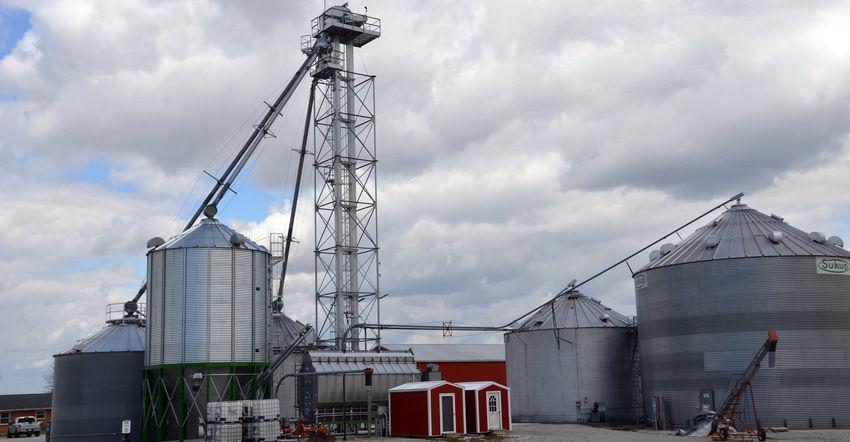
Mark Seib will be the first to tell you that they don’t have enough storage for their corn. But it’s part of their operating strategy, not an omission. Seib and his wife, Sheryl, farm with his brother Wayne, Wayne’s wife, Linda, and Wayne and Linda’s sons, Carl and Matthew, as Seib Farms LLC, Poseyville.
“Our goal is taking advantage of early September prices, which usually offer a premium, to move some corn,” Mark says. “We also routinely use forward contracting and hedges as marketing tools.
“As a result, we don’t need storage space for all the crops we grow. We try to utilize marketing tools to earn good prices on a portion of our crop without needing storage space for it.”
What Mark will also tell you, though, is that until a few years ago, they didn’t have enough storage space for grain they wanted to store. Unloading grain at the main farm headquarters also wasn’t time effective, and their dryer wasn’t energy efficient.
They remedied that situation by installing their first grain leg and increasing total storage capacity at that location to 110,000 bushels, and by adding an energy-efficient Sukup continuous-flow dryer.
“We used a swing-away auger to fill bins before here,” Mark says. “Now, we have a drive-over pit for unloading, which feeds into the grain leg and on to the dryer.
“At the same time, we’ve stepped up our marketing efforts. We understand that we’re in a global market, and we’re learning how to factor what’s happening outside the U.S. in major crop-growing regions into our marketing decisions.”

Safety first around grain center
One young man told his ag teacher recently that one of his jobs was climbing the grain leg whenever maintenance or adjustment was needed on equipment at the top of the leg.
“Do you have stairs?” the teacher asked.
“No, just a ladder,” the student replied. “That’s OK. Heights don’t bother me.”
“Does the ladder have a safety cage?” the teacher asked.
“No, no cage,” the young man answered. “It has landings to rest in a few places.”
“So, you do just go up there once a year?” the teacher asked.
“No, about four times per year,” the young man replied. “Someone has to do it, and I don’t mind.”
The teacher walked away cringing. It would only take one mistake.
That’s why Bill Field, Purdue Extension safety specialist, promotes choosing stairs over ladders when it’s practical in a grain center project. If stairs aren’t feasible, include a safety basket around the ladder.
Field and his staff tabulate farm fatalities and injuries based on newspaper clippings. “Falls from ladders and the roofs of grain bins happen, and they’re often fatal,” he says.
“Spending a bit more to have a safer working environment is money well spent.”
About the Author(s)
You May Also Like




